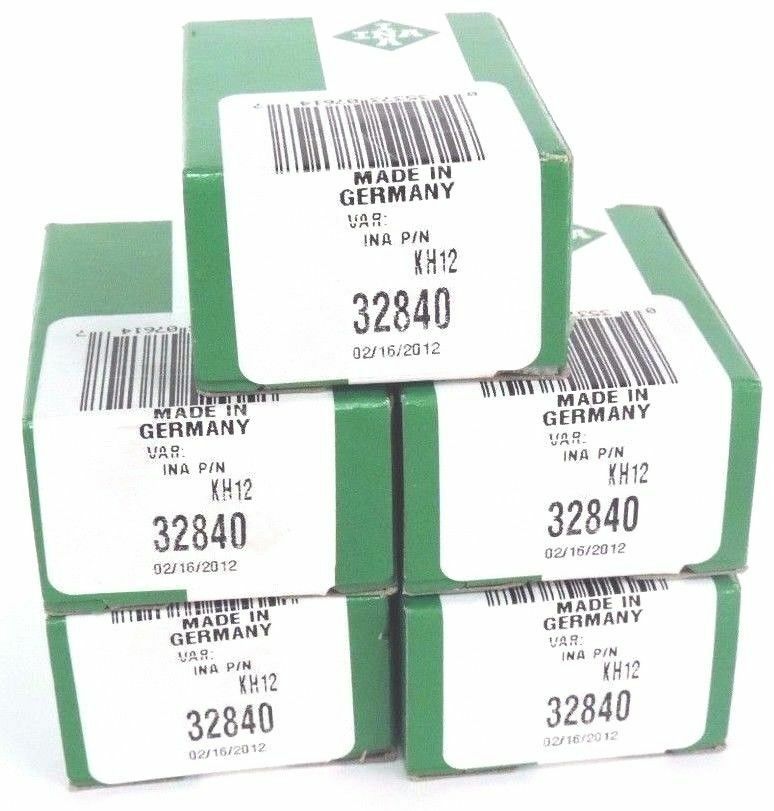Writer: Eric Bearing Limited
1. The role of INA bearing end cover
As one of the very important mechanical parts, the bearing end cover is the main external part of the bearing seat, and its use is very wide. The main working surface of this part is the outer circular surface of the left and right end faces and the left end face. The general function:
(1) Axial positioning of the outer ring of the bearing;
(2) Dust-proof and sealed, in addition to being dust-proof and sealed, it is often used with seals to express the effect of sealing;
(3) The end cover located between the lathe motor and the spindle box mainly plays the role of transmitting torque and buffering shock, so that the rotation of the spindle box is stable.
2. Structure of INA bearing end cover
The bearing end cover is used to fix the INA bearing, adjust the bearing clearance and bear the axial force.
The structure of the bearing end cover has two types: embedded and flanged. Each type is divided into dull cover and transparent cover.
(1) The embedded bearing end cover has a simple and compact structure, no fixing screws, small outer diameter, light weight, and short extension shaft size. However, it is difficult to assemble and disassemble the end cover and adjust the bearing clearance, the sealing performance is poor, the seat hole is slotted, and the processing is time-consuming. Embedded bearing end covers are mostly used in occasions with light weight and compact structure. Needle roller bearing INA KH12 in stock , pls click here :

(2) Flanged bearing end covers are more convenient to install, disassemble, and adjust the bearing clearance, and have good sealing performance, so they are widely used. But the disadvantage is that the outer profile is large in size, and a set of screws is needed to connect.
(3) When the mating part of the end cap and the hole is longer, in order to reduce the contact surface, a smaller diameter is cast or car-drawn at the end, but sufficient length d must be reserved. Generally, the mating length here is e1= (0.10~0.15) D, D is the outer diameter of the bearing, the end face in the figure is recessed by the value of δ, also to reduce the processing surface.
(5) Since the end caps are mostly cast iron, the casting process should be carefully considered. For example, when designing a through-type bearing end cover, because the device seal requires a larger end cover thickness, the casting process should be considered at this time, and the thickness of the entire end cover should be made as uniform as possible.
3. INA bearing end cover process design
Both the end surface and the inner and outer circular surfaces of the bearing end cover require turning processing. Semi-finishing and roughing can be used, and the roughing and finishing should be carried out separately to ensure the surface roughness requirements. The main bearing end cover process design is as follows:
(1) Aging treatment of workpiece
For the cover type fog parts whose blanks are castings, due to the uneven thickness of each part, there is a large internal casting stress, which is easy to cause defects such as deformation, so artificial aging treatment must be arranged. For this end cover, the accuracy requirements are general, and the natural parking and transportation time between roughing and finishing processes can be used to obtain the effect of natural aging treatment. The longer the natural aging treatment, the better, otherwise it will affect the stability of the end cap fitting accuracy. For particularly precise end caps, an artificial aging should be arranged between the rough machining and finishing processes to eliminate the internal stress of the casting and improve the accuracy and stability.
(2) The order of the processing technology should be face first and then hole
As the main two types of machining surfaces on the end caps, planes and holes, from the perspective of stable and reliable positioning, planes are much superior to holes, and at the same time, the machining allowance of the holes can be made uniform; from the perspective of processing difficulty, planes It is easier to process than holes; from the analysis of favorable processing, the holes distributed on the plane are processed after the plane is processed first. Because the defects such as unevenness and sand inclusion on the surface of the casting have been removed, it is greatly beneficial to the hole processing.
(3) Separate roughing and finishing in the processing stage
The end cover is a cast iron piece, and the reserved machining allowance is large. In rough machining, the cutting allowance is large, the clamping force and cutting force are large, and there is more heat cutting, so it has a greater impact on the machining accuracy; In addition, rough machining is cutting the surface metal of the blank, and the internal stress of the workpiece is redistributed, which will also cause the workpiece to deform. Therefore, roughing and finishing are divided into two processing stages, which is conducive to fully exposing the deformation of the workpiece due to various reasons after roughing, and eliminating it in the finishing stage.
(4) Cleaning of the workpiece
At the same time, the cleaning step is also very important. Cleaning is of great significance for ensuring the quality of machine assembly and prolonging the service life of the machine, especially for precision fittings and seals. The purpose of cleaning is to remove oil and impurities on the surface of the fogging part. Commonly used cleaning fluids include kerosene, gasoline, lye and chemical cleaning fluids. When cleaning, scrubbing, dipping, spray cleaning, ultrasonic cleaning, etc. can be used.
Tel: 00852-30697500
Fax: 00852-30697511
Email: sales@ericbearing.com
Message: Click Here Message!